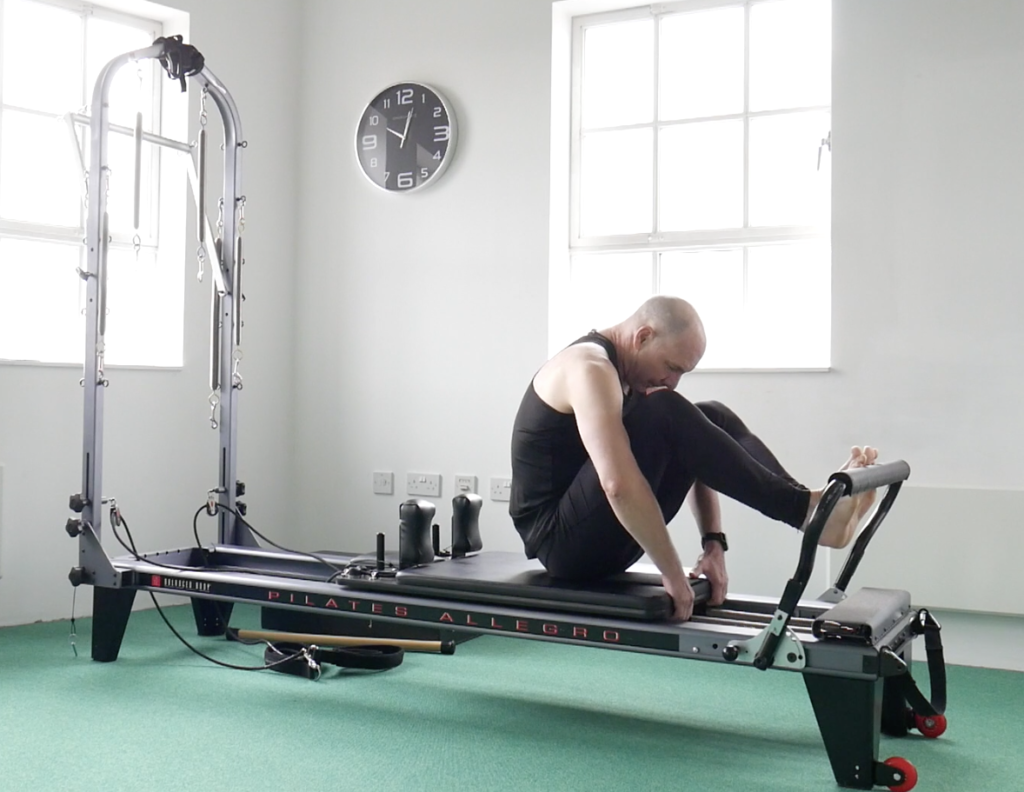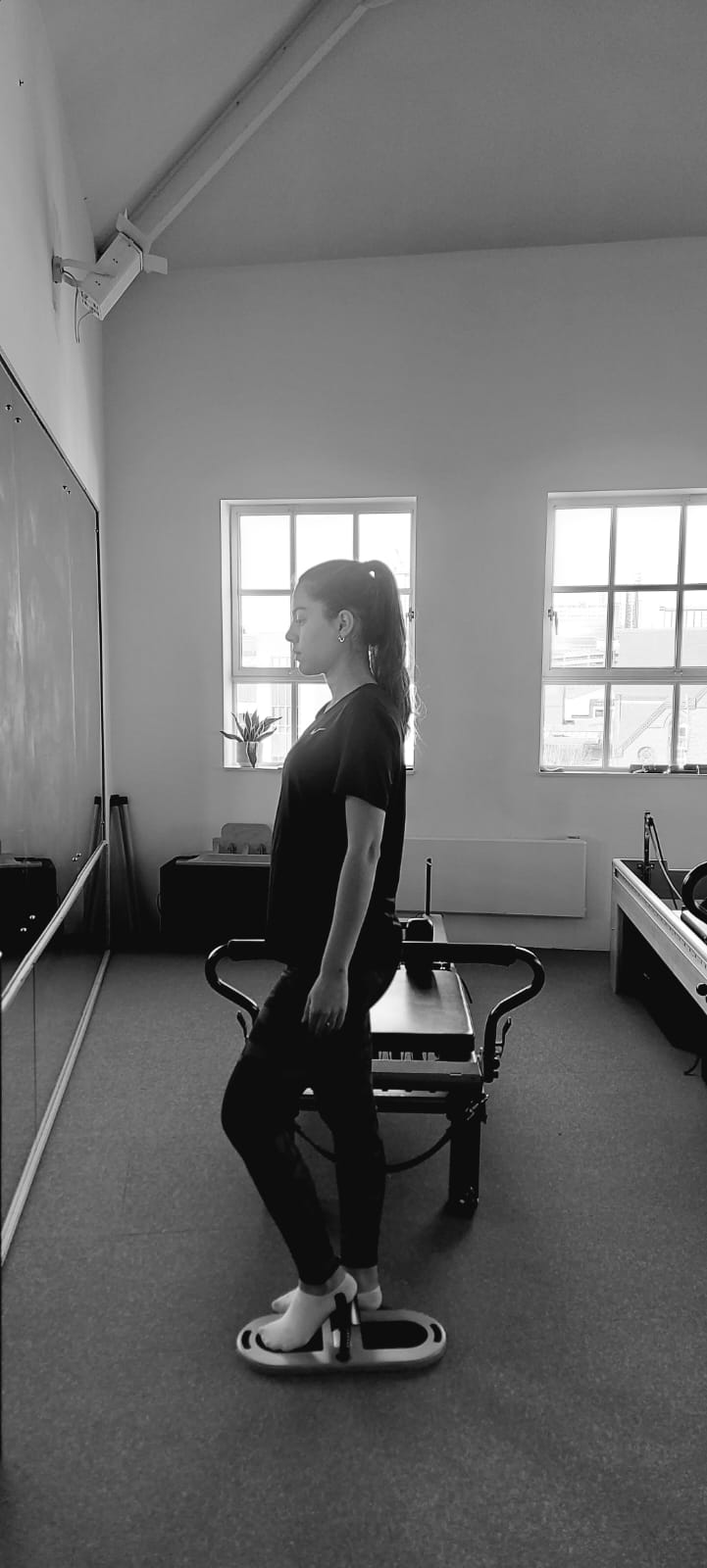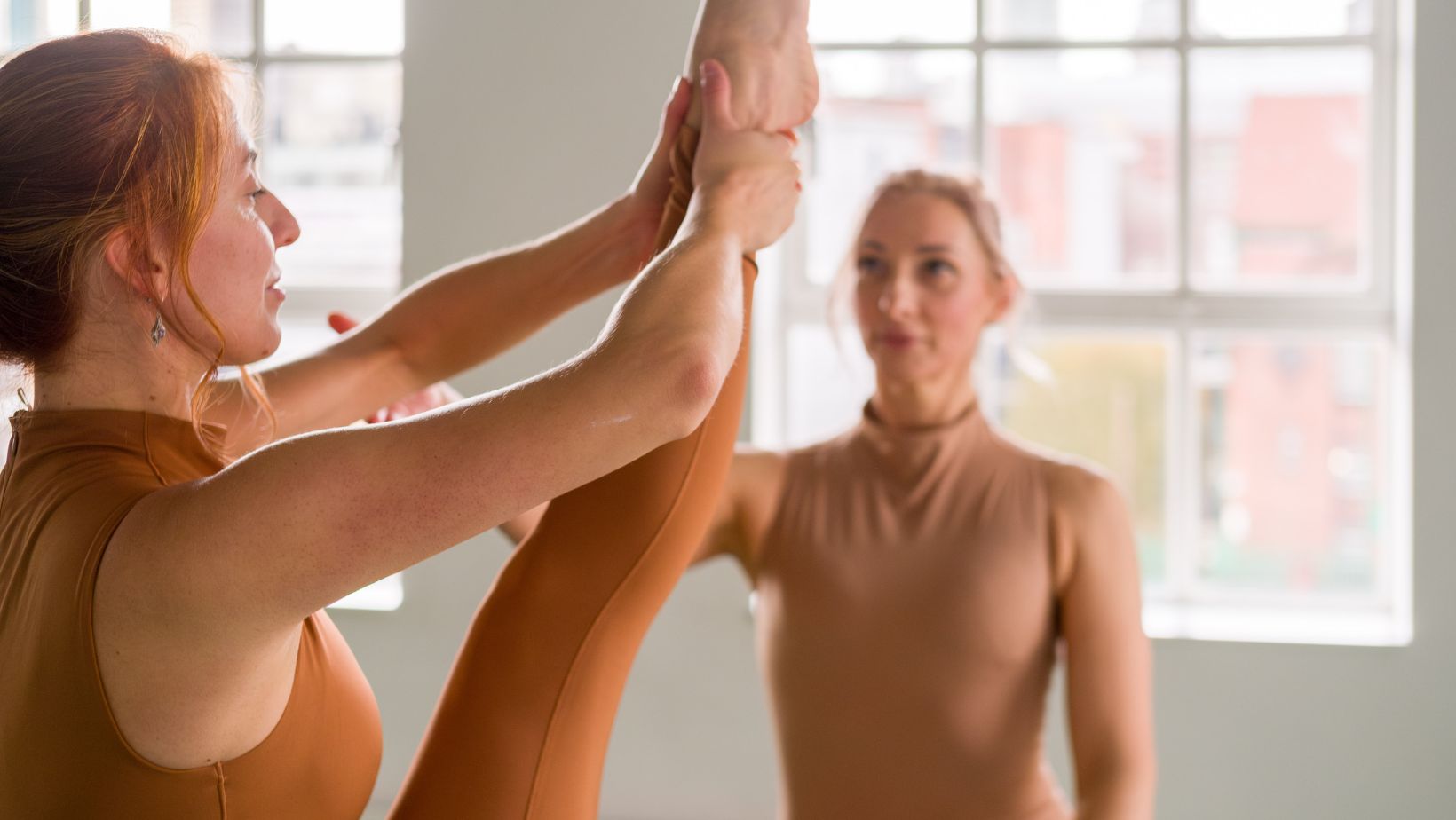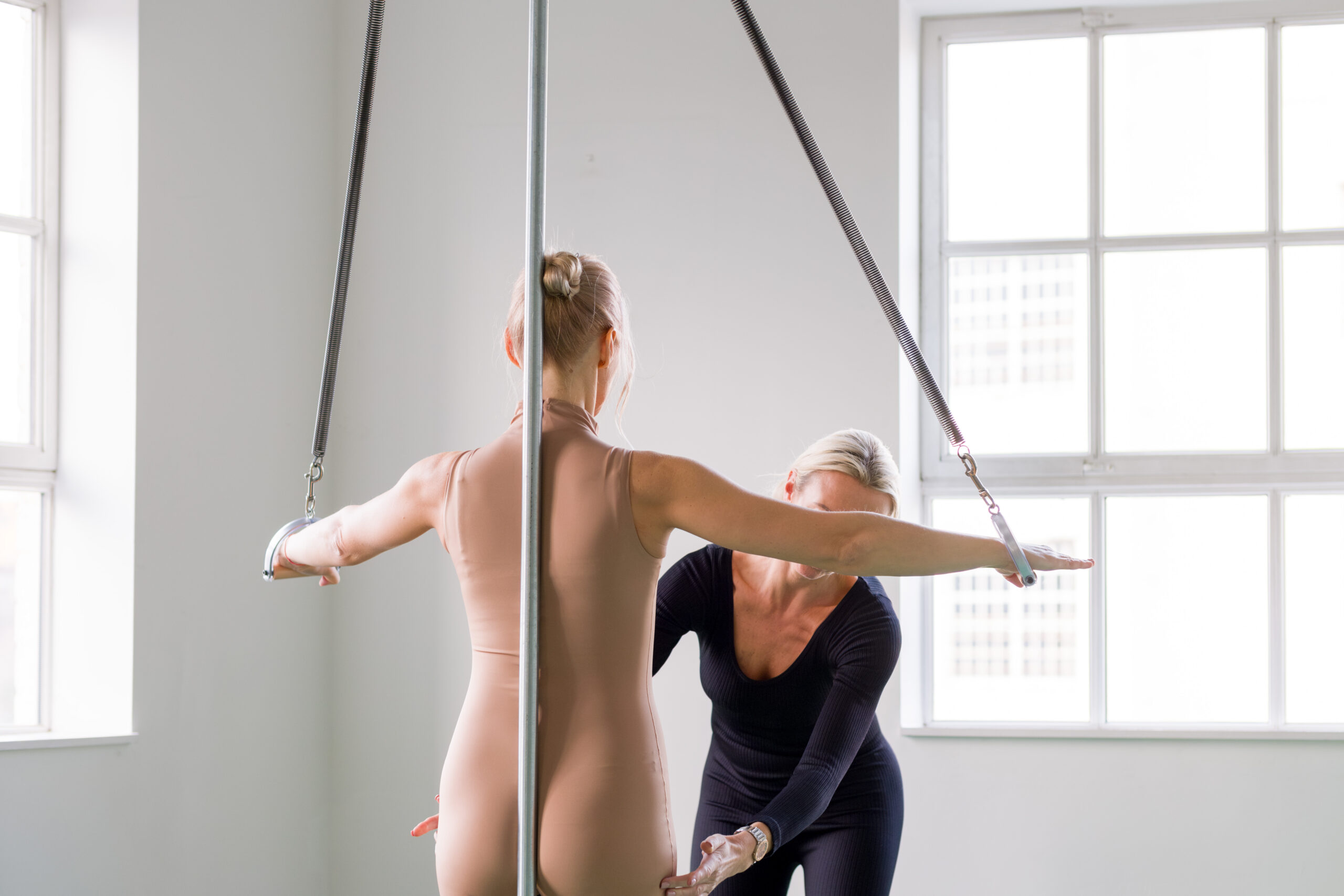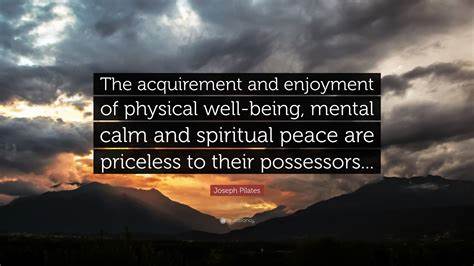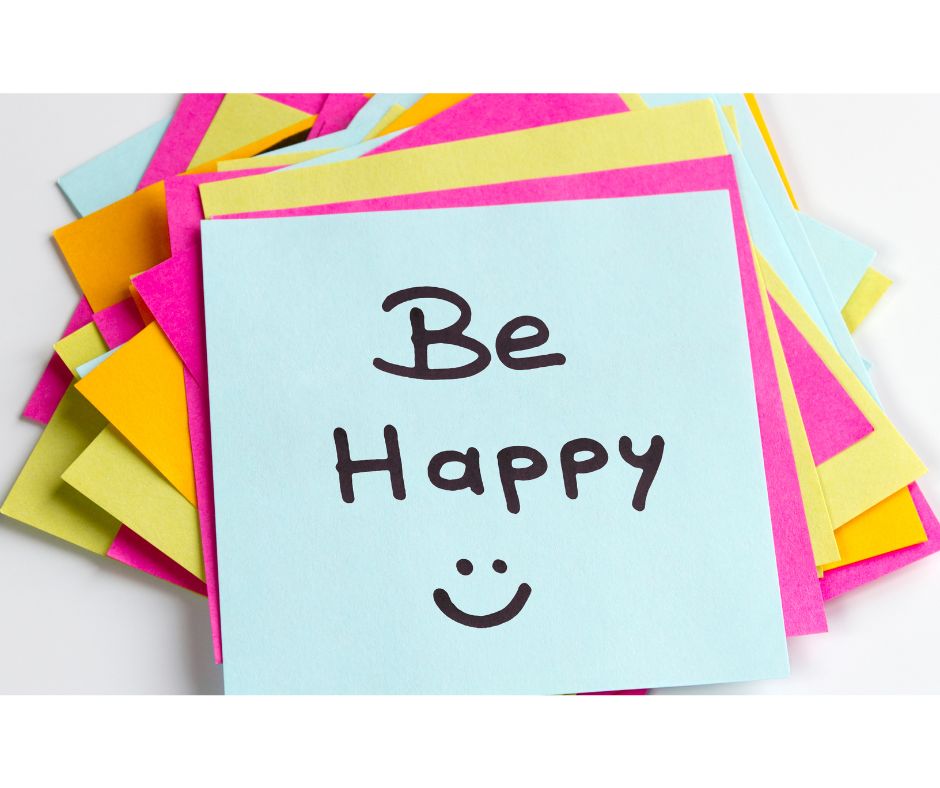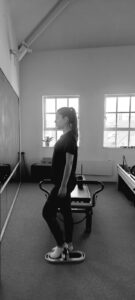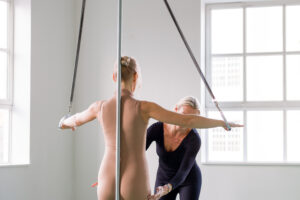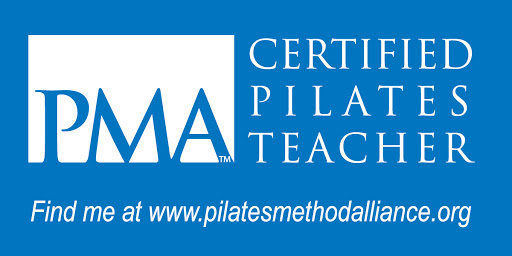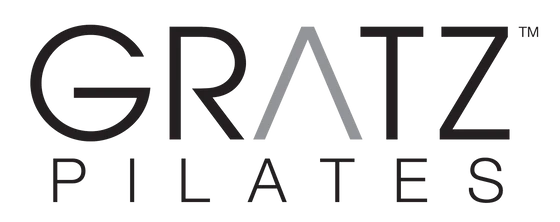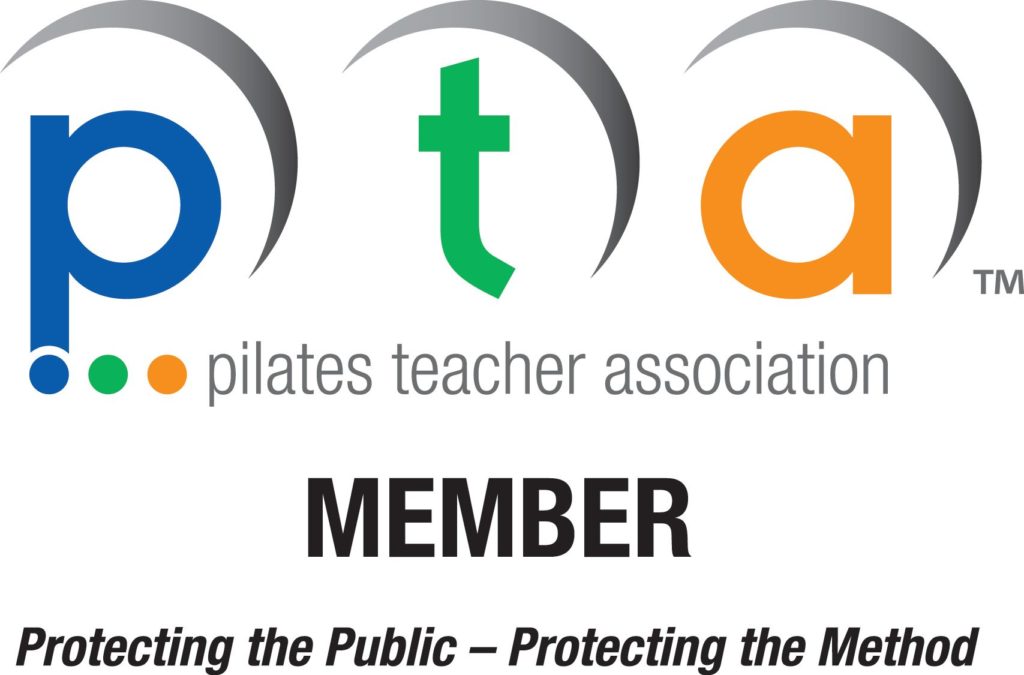Workshop: Starters' Reformer
Who is this Pilates Workshop for?
This is for anyone that is interested in finding out what Pilates & Reformer and Reformer Pilates is all about.
It’s perfect for first timers and those just starting on their Pilates journey.
Numbers are very limited.
It’s not suitable for you though if you are pregnant or have an acute injury.
What we'll be doing
In this workshop we’ll be looking at the Basic Reformer exercises on Reformer and how they connect to all the other apparatus.
We’ll work through the exercises one by one and then, numbers permitting, put them together as a full workout.
This isn’t a group class, or a full on workout, instead it’s a practical exploration of the Pilates System.
If you’re looking for Intermediate: click here
Foundations doesn't mean "beginners"
It’s perfectly possible to do “advanced” exercises in your First Lesson. But it is the HOW and the DEPTH that determines the level – it’s what you bring to the exercise that determines your level – not the exercise itself.
Everyone learns the One Hundred on their First Day, but an experienced person’s One Hundred is totally different in depth than the beginners’ One Hundred.
Booking...
But first, a little about Pilates...
There is no such things as "Mat Pilates" or "Reformer Pilates"
... instead, it's a very elegant system of interconnections.
Modern marketing likes to have us think that “Mat Pilates” and “Reformer Pilates” are distinct things. But in reality, the Reformer teaches you how to do exercises on the Mat. And the Mat teaches your Reformer.
It’s all linked together, like a spider’s web, a thread, an interconnection.
There’s more.
The rest of the apparatus is there to:
- build up to Mat & Reformer exercises which are currently inaccessible
- to further challenge what we can already to on Mat & reformer
- to address individual needs
Choosing to do Reformer over Mat (or the other way around) is like taking a small slice of the pie and leaving the rest of the pie behind.
If there's no such things as "Mat Pilates" or "Reformer Pilates", what's it all about, then?
1. So, what's the difference between Pilates on Mat and on Reformer?
The Reformer gives us springs that work like supplementary muscles. the headrest, Footbar and Shoulder Rests (as well as the springs) provide sensory feedback.
This feedback is totally lacking on the Mat. You have to do everything yourself.
There are many exercises in common. But the different context changes the exercises. That is part of the genius of Joseph Pilates – he understood how humans learn.
2. It's all in a name - and in an apostrophe
Joseph Pilates called his System “Contrology”. That’s a much better name than “Pilates”. It helps us to perfectly understand what we’re doing: learning the science and art of control.
The republication of his book (1998) is called: “Pilates’ Return to Life through Contrology”. There’s a possessive apostrophe.
3. Everything in Pilates can be summarised in just one sentence
“Pilates is either mobilising the spine around stable limbs, or mobilising limbs around a stable spine…”
You can ignore the next part until you’re more advanced:
“…and the transitions in between.”
— Sean Gallagher
4. There are just a few types of exercises in Pilates - Exercise Families
- Stability
- Mobility: rolling and unrolling the spine
- Side Bending
- Rotation
- Extension
- Rocking & Rolling
Foundational Reformer focuses on Stability. There is some Mobility, Side Bending and Rotation.
Extension is approached through “Flat Back” exercises.
- That’s it!
5. There's a "progression of difficulty" in Pilates
Pilates workouts start lying on our backs, progress to sitting up supported, then unsupported and later to standing.
Some people even start going upside down! That’s walking on their front legs.
What Pilates isn’t about is increasing either load or number of repetitions. That’s physiotherapy or Personal Training. Pilates works completely differently.
Here it is! What we'll be doing 🙂
The Focus of Foundational Reformer
A primary focus of the Foundational Reformer is to begin to set us up for the Mat but without the tactile support that the Reformer (headrest, shoulder rests, footbar, and springs) gives us.
Another primary focus is to set us up for higher level exercises. All the foundational movement patterns are all found in all the other Reformer exercises at higher levels.
The Focus of all the Foundational Exercises is:
- Centering: working from the inside out by identifying and engaging the Powerhouse in a variety of different positions.
- Alignment of the “box” that is the box formed by the tips of the shoulders and hip bones.
- Spinal stability: whilst our limbs move around: learning to hold our spine in round and flat.
- There is side bending and rotation, but it is subtle.
- The physical emphasis is on the feet, legs & spine. Some shoulder work is there, but this comes mainly in Intermediate and Advanced.
Footwork : V Position Toes & Parallel & Tendon Stretch
Connection to the previous exercise in the Practice Order: this is the first exercise of Foundational Reformer.
Connection to the previous exercise in the Exercise family: this is the first exercise in the Stability Family.
Point of Support: Spine on carriage & feet on Footbar, arms pressing into carriage.
Headrest: half or fully up.
Springs: 1-5
Connections Around the Studio:
Teaches us the engagement of the Powerhouse which is used in every Pilate exercise. It’s the basic idea of “centering” – working from the inside to the outside.
- Mat: One Hundred and … every other exercise
- 2×4: Footwork
- Baby Barrel & Spine Corrector: Leg Series
- Ladder Barrel: Ballet Stretches
- Cadillac PTB: Footwork, Long Spine,
- Short Spine, Monkey, Tower
- Cadillac RBB: Roll Back
- Cadillac: Leg Springs Series: Frogs,
- Leg Circles, Scissors, Walking, Beats, Bicycle, Circle Frogs
- Wunda Chair: Pumping Seated & Standing, Tendon Stretch
- Foot Corrector: Heel on base, Foot Lift on Toes, Arches, Heels & Mud Scraper Front to Back and reverse
One Hundred
Frogs
Leg Circles
Stomach Massage: Round Back
Stomach Massage: Flat Back
Stomach Massage: Reach
Short Box: Round Back
Short Box: Flat Back
Short Box: Side to Side
Short Box: Twist
Short Box: Climb a Tree
Long Stretches: Elephant
Knees Stretches Round Back
Knee Stretches Flat Back
Knee Stretches Jack Rabbit
Running
Pelvic Lift
Front Splits
If you liked this content...
If you have found this material useful, why not find out more by booking a “First Lesson”?

